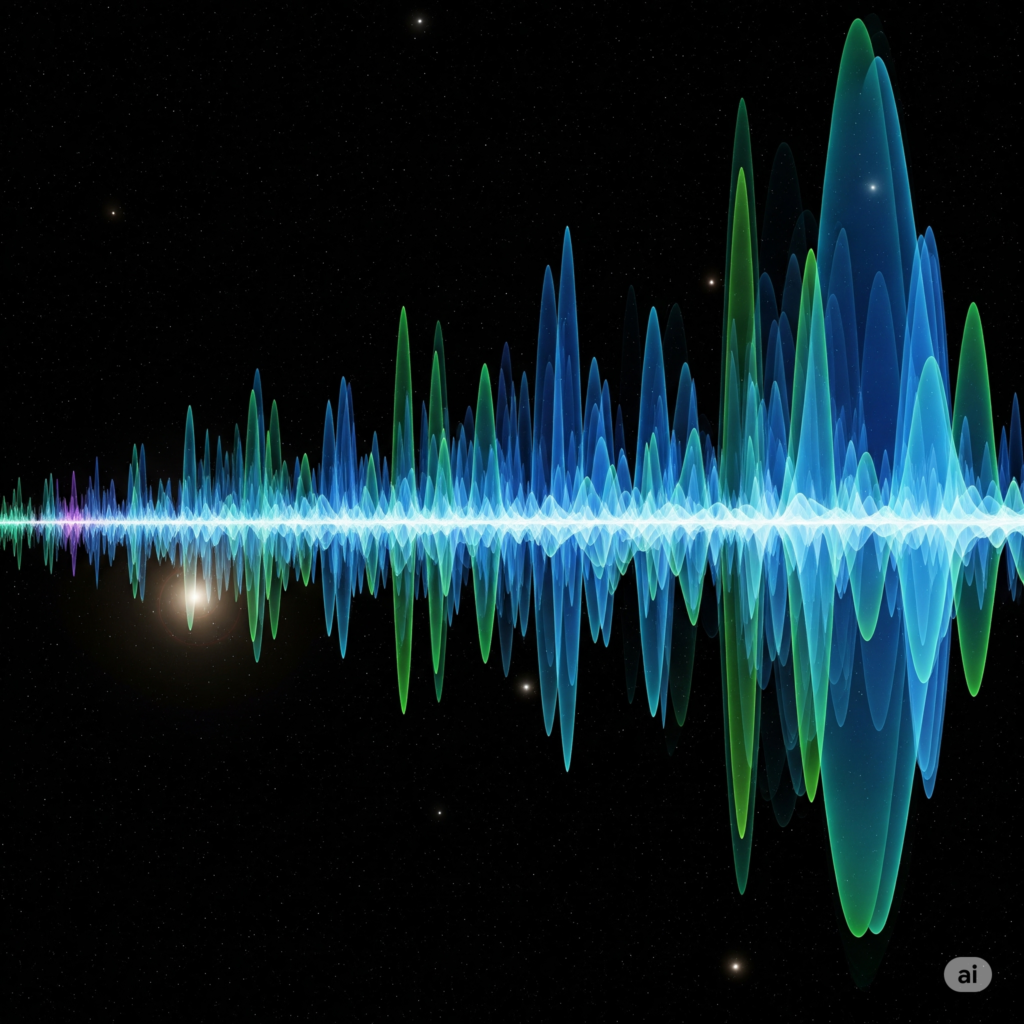In short:
- NASA’s Voyager 1, launched in 1977, recently intercepted a signal from approximately 25 billion kilometers away.
- Scientists initially assumed it to be a malfunction, data artifact, or simple test command.
- After detailed decoding, the signal was identified as a musical composition or song — an unprecedented discovery.
- The source, nature, and intent behind the signal remain unknown, raising speculation about deep space phenomena or even intelligent origin.
Introduction
For decades, the Voyager 1 spacecraft has quietly drifted through the vast emptiness of interstellar space, dutifully relaying data back to Earth. Launched over 45 years ago, it was never designed to communicate with anything beyond our solar system — and certainly not to receive musical transmissions from across the stars. Yet in a development that has both baffled and excited the scientific community, Voyager 1 recently intercepted a message unlike any other: a song.
What could it mean when a spacecraft, 25 billion kilometers from Earth, picks up what sounds unmistakably like music? Is this merely a natural anomaly — a product of radiation and magnetic waves creatively interpreted by human ears — or is there a deeper, more profound implication?
This blog delves deep into the science, mystery, and philosophical intrigue of Voyager 1’s latest encounter.
Voyager 1: Humanity’s Far-Flung Ambassador
Voyager 1 is the most distant human-made object from Earth. Launched by NASA on September 5, 1977, its original mission was to study the outer planets — Jupiter and Saturn — and then continue on a trajectory out of the solar system.
Key facts:
- Current distance from Earth: Over 25 billion kilometers
- Power source: Plutonium-238-based Radioisotope Thermoelectric Generator (RTG)
- Communication: Uses NASA’s Deep Space Network (DSN)
- Onboard: The famous “Golden Record” — a message for extraterrestrial civilizations
Voyager 1 officially entered interstellar space in August 2012, marking a historic milestone for space exploration. Since then, it has continued sending data about cosmic rays, plasma waves, and magnetic fields from beyond our solar neighborhood.
The Unexpected Transmission: A Song from the Void
In early 2025, NASA scientists monitoring Voyager’s low-frequency data channels noticed an anomaly. What initially seemed like a signal interference was later found to follow a structured rhythm.
After noise filtering, spectral analysis, and frequency enhancement, the signal began resembling a musical pattern. Chords, scales, and rhythm suggested intentionality. It wasn’t Morse code, radio chatter, or data packet corruption — it was a song.
Highlights of the signal:
- Length: ~90 seconds
- Structure: Verse-chorus-like repetition, tonal consistency
- Frequency range: 30–300 Hz (audible with enhancements)
Scientific Process: How a Signal Becomes a Song
Turning raw electromagnetic signals into recognizable audio is a complex process:
- Data Collection: Voyager transmits compressed telemetry, including cosmic wave interactions.
- Fourier Transform: Breaks signals into frequency components to identify non-random patterns.
- Signal Cleaning: Eliminates background cosmic noise and interference from solar flares or Earth-based emissions.
- Sonification: Converts frequency variations into sound — a technique used to analyze seismic, astronomical, and even financial data.
This method has been used to “listen” to space before — like the plasma wave sounds of Jupiter — but never has it yielded something this musically coherent.
Theories Behind the Musical Message

The scientific community remains divided, with a range of interpretations:
- Natural Origin: Could be caused by an unusual cosmic event like a pulsar oscillation, black hole echo, or even a plasma interaction shaped coincidentally like music.
- Reflection or Echo: Earth-based or satellite signals bouncing back through a rare spatial alignment.
- Artificial Origin: A possibility — however remote — of an intelligent transmission, perhaps picked up from Voyager’s own radio emissions or relayed via unknown celestial object.
- Instrumental Artifact: A glitch in Voyager’s aging transmission system manifesting as rhythmic noise.
Despite the exciting implications, NASA has emphasized caution, continuing rigorous investigation before drawing conclusions.
Could It Be a Response to the Golden Record?
Voyager’s Golden Record — a time capsule of Earth’s sights, sounds, and greetings — was designed as a symbolic gesture. Some speculate: could this “song” be a reply?
Arguments for:
- Matching musical keys to those on the Golden Record
- Use of rhythm patterns found in Earth’s music
Arguments against:
- Signal lacks any metadata or recognizable language
- No repeat transmission detected so far
Still, the poetic symmetry of sending music and receiving music back is fueling imaginations.
Implications for SETI and Future Missions
Whether this is a message or a mirage, it’s a wake-up call for the scientific community. SETI (Search for Extraterrestrial Intelligence) researchers are now re-examining decades of passive listening through a new lens.
Possible outcomes:
- Renewed funding for deep-space listening
- Improved sonification techniques
- Launch of new probes with active listening tools
- Revisiting past unexplained signals like the Wow! signal
If validated, this event could redefine our approach to interstellar communication.
Ethical and Philosophical Questions
What if the signal is from another intelligence? Should we respond? What if it’s an echo of another civilization long gone?
Debates around:
- Technological maturity: Are we ready to communicate with advanced beings?
- Security risks: Could replying expose Earth?
- Cultural impact: How would such contact affect religion, society, science?
Carl Sagan, who helped design the Golden Record, once said: “The universe is not required to be in perfect harmony with human ambition.” This discovery may be a reflection of that truth — both inspiring and humbling.
The Sound of the Cosmos: What Does It Really Mean?
Whether a natural harmonic resonance or a crafted signal, the fact that the universe can produce music — intentional or not — underscores its mysterious elegance.
Maybe it’s a reminder that we are not alone. Maybe it’s just space singing back the echoes we sent out.
Either way, Voyager 1 continues its silent journey into the stars, now with a melody that may forever change how we listen to the universe.
Conclusion: From Machines to Meaning
In the 1970s, Voyager 1 was built with slide rules and dreams. Decades later, it delivers a mystery that blends science, art, and wonder. Whether this song is a glitch, a galactic coincidence, or something more, it has already achieved something profound: reconnecting humanity with the awe of the unknown.
We may never know the full truth behind Voyager 1’s mysterious tune, but we now listen more carefully to the universe — just in case it’s humming back.









+ There are no comments
Add yours